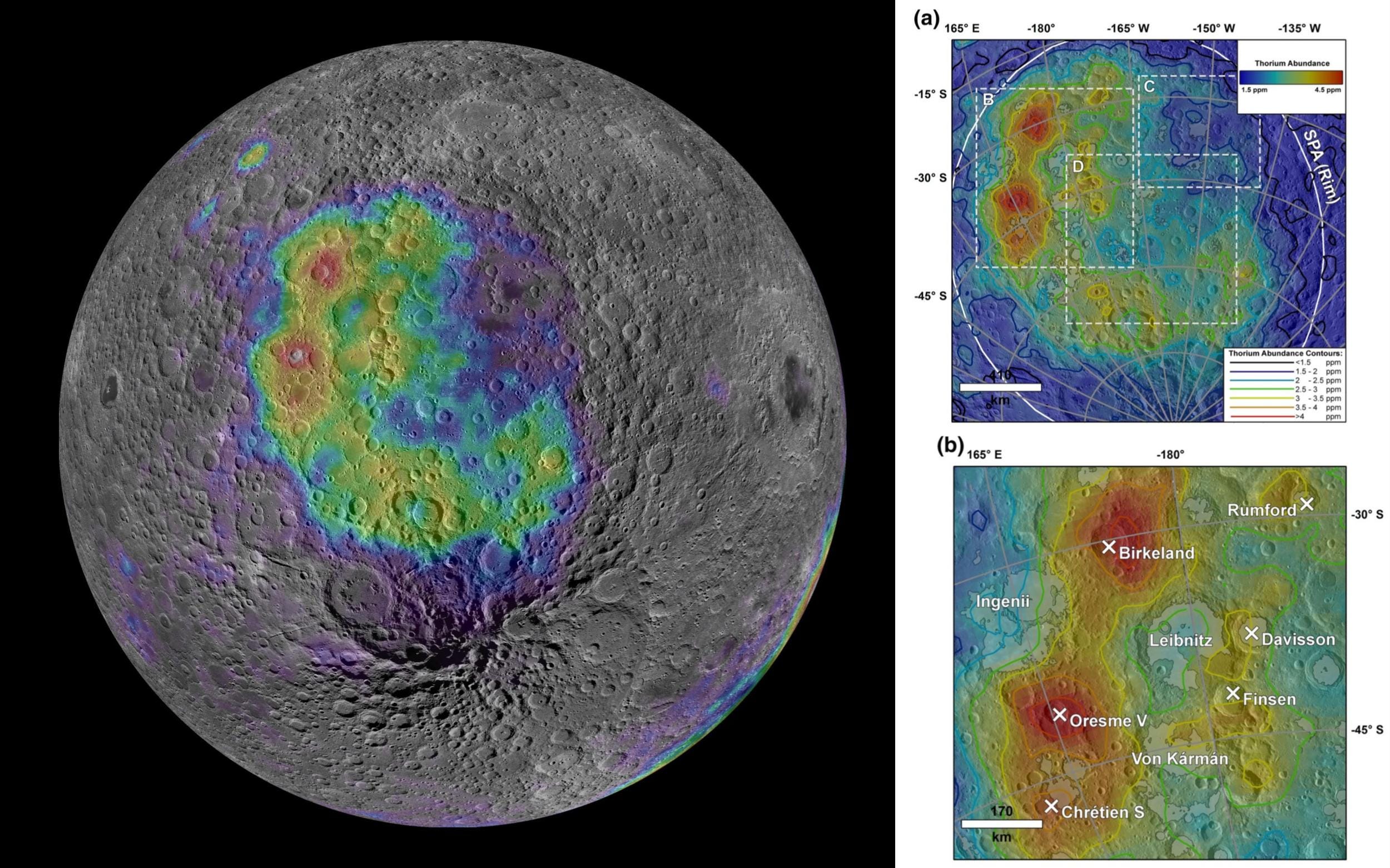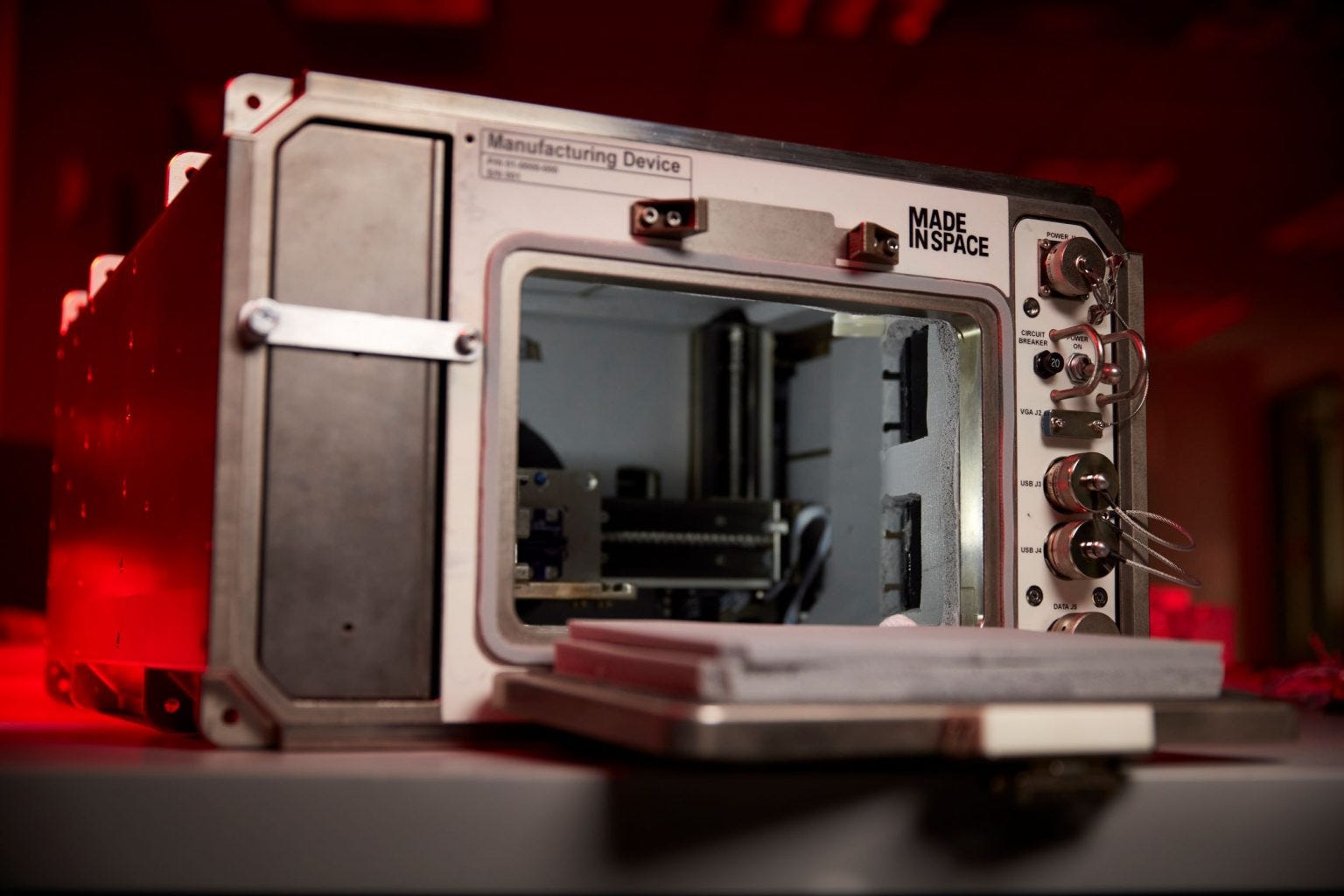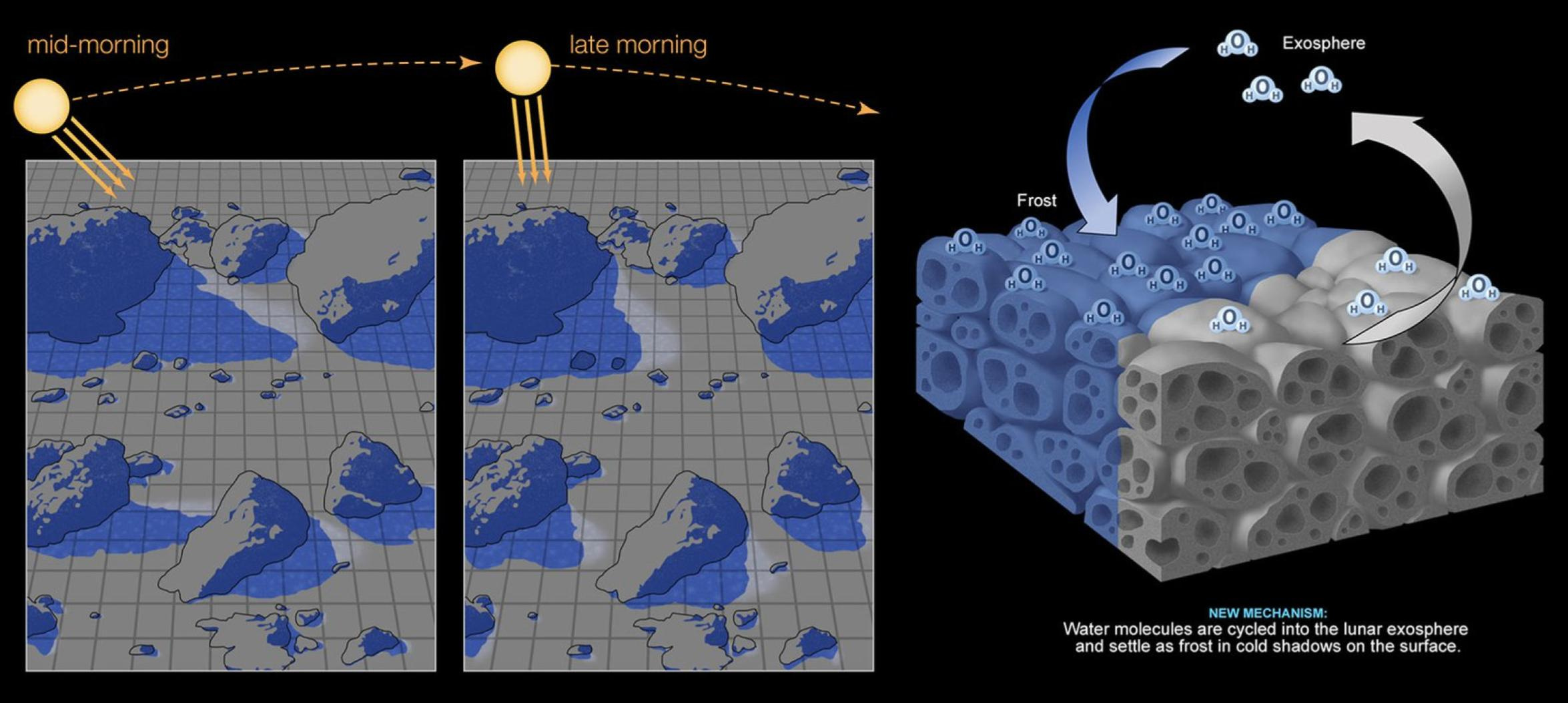Moon Monday Issue #39
Finding ancient material dug out from the Moon's insides, 3D printing in space using lunar soil, ispace raises $46 million for future Moon missions, lunar water mystery and magnetic history, and more.
Today’s Moon Monday issue is a science special, with the Highlight story being a pleasant non-tech-news one. Also, I got feedback from some readers that they’d like the Science section and related coverage to be more simplified. Today’s issue is my attempt at the same. Lunar science enthusiasts reading this, let me know if you find the coverage informative and enjoyable. Planetary scientists reading this, please let me know if there are inaccuracies!
Highlight
Our leading theory of how the Moon formed suggests that shortly after, it was covered in a global magma (molten rock) ocean at least 500 kilometers deep. It cooled and crystallized with time, as the denser materials formed the mantle, and the less-dense ones the surface and crust. Not along after, the Moon was bombarded by massive asteroids and comets that broke through the crust and excavated and scattered pieces of the mantle on the lunar surface. Two new NASA studies—in Nature Communications and the Journal of Geophysical Research—have identified the best surface locations to collect and study such pieces of the Moon’s insides, as preparations for upcoming (sample return) science part of the agency’s Artemis program.

While scientists already had a high-level understanding of mantle materials across the Moon’s surface, finding specific pristine locations is difficult due to over four billion years of impacts and volcanic eruptions diluting such deposits. To hunt down the most pristine mantle material locations, the new studies combined data from lunar samples, lab studies, and India’s Chandrayaan 1, NASA’s LRO, and NASA’s Lunar Prospector orbiters respectively to use as inputs for up-to-date geological computational models of the Moon’s evolution.
They found multiple regions within the 2600-kilometer wide South Pole–Aitken Basin—the largest, deepest confirmed impact structure on the Moon—contain easily accessible, rich mantle deposits. These regions are the craters of Birkeland and Oresme V (both being most abundant sources), and areas in Finsen, Alder, Rumford, Davisson, Von Kármán, and Chrétien S. Interestingly, some of the mantle materials may also be present around the proposed landing sites for the first few Artemis missions and the VIPER mission near the Moon’s south pole.
Some of these mantle surface deposits, such as thorium-rich material, are really dense and should’ve sunk deep into the mantle during the earliest phases of the crystallizing magma ocean, thus puzzling scientists how so much of it could have been excavated on the Moon’s surface. The new models explains how different materials in the Moon’s magma ocean crystallized at different times, and sunk accordingly, leading to a complex series of churning of materials in the mantle. Ultimately, some of the densest materials enriched in rare elements like Thorium were left floating at the top of the mantle, being among the last to crystalize. This material was then excavated out to the surface by giant impacts, making it easier for us to collect and analyze them.
Currently, we have no definitively confirmed mantle materials in our lunar sample collection from Apollo, Luna, and Chang’e missions. If collected and studied, Moon mantle fragments will not just provide us with a better understanding of how the Moon evolved but also how other rocky worlds of our solar system, including Earth, did. The formation of magma oceans is thought to be universal across rocky planets and moons in the universe. Our Moon, being the most accessible and well-preserved body in our solar system to study these fundamental processes, beckons.
Exploration
On August 10, an Antares rocket will launch an experiment by Redwire to the International Space Station, which aims to demonstrate autonomous 3D printing in space using a lunar soil simulant, a first such attempt. Upon successful printing, the manufactured samples will be returned to Earth for analyzing the system’s efficacy. Redwire has developed this technology in partnership with NASA’s Marshall Space Flight Center, with the goal being to determine how feasible it would be to construct structures on the Moon using raw materials available there. As their participation in NASA’s Artemis program, Redwire wants to be constructing habitats, landing pads, roads, and more such infrastructure.

Rocket lab will launch NASA’s CAPSTONE mission to the Moon in later this year from New Zealand instead of the U.S. as was originally planned. The 25-kilogram CAPSTONE spacecraft is built by Advanced Space, and funded by NASA at $10 million, to prove the feasibility of the unique fuel-saving elliptical lunar orbit that the NASA-led Gateway space station will be in later in this decade. Also, CAPSTONE’s team will work closely with the NASA LRO team for both spacecraft to communicate with each other and demonstrate autonomous navigation in lunar orbit, key to efficient operations when many spacecraft will be around the Moon in the near future.
Per Eric Berger, Blue Origin will ship a pair of BE-4 flight engines to ULA before the full qualification testing of the engine design is complete. While ULA will be integrating the engines on its Vulcan rocket’s maiden flight to launch Astrobotic’s 1st Moon landing mission, Blue Origin will be testing identical copies of the engines for full qualification. The flight, which has already been delayed to Q1 2022 instead of later this year, may be further delayed depending on how the engine tests fare. In an interview with SpaceNews, ULA Chief Tory Bruno acknowledges the 4-year delay of Blue Origin’s engines. He also noted that this move of getting pre-fully-qualified flight hardware isn’t risky because they’ve extensively tested similar non-flight versions of the engines. However, he said he won’t fly Vulcan before the final tests but expects Blue Origin will complete full qualification testing on identical flight-engine copies before Vulcan launches, giving them virtually the same expected level of confidence in the mission’s success.
ispace, inc. Japan announced on August 4, 2021 that it has raised $46 million, bringing their cumulative funding till date to approximately $195.5 million. These new funds will be used for their 2nd Moon landing mission in 2023 as well as to increase the size of the lunar lander for their 3rd mission, currently planned for launch in 2024. The lander for the 3rd mission is currently being developed in their U.S. facility.
The Canadian Space Agency has awarded a USD $28 million contract to MDA to develop robotic interfaces related to the autonomous Canadarm3, Canada's contribution to the NASA-led Gateway lunar station. Specifically, this contract is for MDA to conduct detailed design work on Gateway’s external robotics interfaces which will allow the large Canadarm3 arm, and the small dextrous arm, to effectively walk around the station to externally inspect it, maintain or repair it, assemble new modules, capture and dock visiting spacecraft, load and unload payloads and science experiments, support astronaut spacewalks, and more. These robotic interfaces will be delivered before Canadarm3, on the planned 2024 launch on a SpaceX Falcon Heavy of Gateway’s two principal modules—The Habitation and Logistics Outpost (HALO) and the Power and Propulsion Element (PPE).
The European Space Agency (ESA) is asking its member state companies to demonstrate a compact, low-power system to quickly extract oxygen from soil on the Moon with at least 70% oxygen yield from the sample. This will help evaluate the prospects of building larger lunar plants to produce fuel for spacecraft, air for astronauts, and metal for equipment and infrastructure. ESA will fund to further develop the winning proposal for launch on a lunar lander—possibly on the European Large Logistic Lander—around the middle of the decade.
Science
In a new study, scientists explain why the amount of water in sunlit regions on the Moon’s surface changes throughout the day. Unlike assumed before, high daytime temperatures doesn’t necessarily mean most lunar surface water is lost to space. Because the Moon lacks an atmosphere, shadows caused by its terrain can be more than cold enough to retain any water present there, or produced by micrometeorite bombardments, as frost. As the Sun changes position through the lunar day, the frost in these shadows is slowly exposed to sunlight, vaporized, and transported into the Moon’s exosphere, at least some of which refreezes in other shadowed areas.

If this proposed mechanism of the moving of surface water throughout the lunar day is accurate, it substantially increases the Moon’s capacity to hold water at all latitudes, and significantly so within 45 degrees of its poles. The mechanism could be confirmed soon. A mass spectrometer onboard Astrobotic’s first Moon mission next year will measure water vapor at its landing site of Lacus Mortis at 45° N. Russia’s Luna-27 mission to the Moon’s south pole in 2025 will carry a similar instrument. With such measurements, scientists will be able to understand exactly how water gets transported around the Moon, particularly from the equator to its poles, where it can remain preserved for billions of years.
Magnetized rocks from Apollo samples have suggested that our Moon had a strong long-lived global magnetic field between at least 3.9 and 3.6 billion years ago. A new research result challenges that interpretation by saying the magnetization of the samples could instead be due to asteroid or cometary impacts. The authors analyzed multiple 3.2-3.9 billion year old Apollo samples and found no evidence of a strong magnetic field in them, despite these samples containing minerals that could record any global magnetic field present during their cooling and formation. Next, they analyzed glass-like rock samples formed by an asteroid impact 2 million years ago—when the Moon certainly didn’t have a global magnetic field—and found them to be magnetized.
The authors say the only way to resolve why some ancient Apollo rocks aren’t magnetized but others are, and how younger samples can be magnetized, is through impact shocks. However, oddities still remain. For example, the new proposition can’t seem to explain stable magnetic fields found in many lunar rocks which demonstrably formed in slowly cooled environments, unlike impact shocks, and need a sustained external magnetic field to be present. NASA’s 2024 robotic mission to the magnetic Reiner Gamma and samples brought to Earth from Artemis human landing missions could shed light on this matter, and improve our understanding of the Moon’s magnetic evolution.
More Moon
NASA is seeking ideas from university students for novel mobile platforms that aren’t wheeled rovers so that we can explore different types of terrain on the Moon, or better so, such as permanently shadowed regions, lava tubes, and much more.
Dear reader, I’m publishing this one-of-a-kind Moon exploration newsletter for free, with no ads. And it will stay that way. If you like my work, your support will help keep it going.
